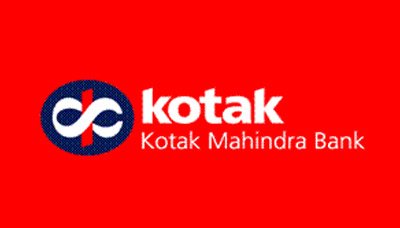– Turn one’s business into a successful model during lockdown

PUNE, India, May 11, 2020 /PRNewswire/ — As the nation is under lockdown, IT companies, banks, media, advertisers, marketers, every sector is adopting work-from-home model as social distancing has become a norm for brands and corporate conglomerates. It is ironic that the virus outbreak has been bringing the world together and at the same time keeping everyone apart. People started using Payment Apps, Online Meetings and E-Learning courses in large numbers, due to pandemic. Being able to communicate effectively is more critical than ever for connecting with one’s audience. To this effect, content localization in local vernacular languages is key to delivering the right message to the diverse audience.
LinguaSol’s translation solutions are an effective way for global as well SME brands to localize their communication channels/digital collaterals such as Apps, Online Education courses, E-Learning, Website, Ads, Emailers, Social Media, SMS, etc. for public awareness and engagement with the customers. Linguify is the flagship solution that can translate the website contents over 100s of Indian and foreign languages and can be used to translate UI of websites, cloud applications or enterprise software.
With over 19,500 languages including dialects spoken across India, the language diversity in India is absolutely massive. Languages are complex, ever-changing, and impacted heavily by local culture. For companies looking to reach across geographies, one time translation alone is not just enough. Instead, brands need to create a scalable content localization process. Today google translation and a slew of other software and applications make sense of English. Yet, brands get into conflicts with incorrect translations and broken sentences with no consideration to context or domain. A gaping hole, many businesses have decided to fill, with an added focus on R&D to bring more vernacular languages to the customers.
Recently, the government of India with the help of NITI Aayog launched ‘Aarogya Setu App’ in the wake of COVID-19 pandemic which has crossed the 7.5 crore (or 75 million) downloads mark. As the app is available in 11 languages, millions of users have downloaded the app for their safety. In such health crisis, even the government of India has been taking an active role in localizing their content while communicating with the masses. This has helped them increase their reach across geographies and helped people understand the usage and benefits of the app. Even the information portals of the government are available in regional languages so that the public understand the information circulated.
The content localization industry has demonstrated steady growth during the last decade. In every sphere, content localization has played a dominated role be it OTT platforms, social media platforms, banking, voice-assistance app, government sites, so on and so forth.
Mr. Sunil Kulkarni, Founder and CEO, FidelTech said, “Content localizing involves adapting regional content for customers to increase the accessibility and be at ease while using your services. And it can go above and beyond from just covering a number of customer groups and target the wider set of audience. In the current situation even the remotest locations of India are marked as containment zones. This has led to people adopting digital mediums to buy groceries, pay via digital payments app or transfer through net banking. Here the concern is for the people who can’t communicate through English language.”
In India top broadcasters like Zee and Star India have spearheaded this growth through the launch of several new regional channels. By localizing their existing content into multiple languages, they have successfully forayed into new markets and reached new audiences. Content localization is the need of the hour during such health crisis, not only does the OTT or broadcast medium require content localization but it is also required by the banks, digital payment apps and every sector looking at communicating with wider audience.
Similarly, for the EdTech industry in India, there is a huge potential for content localization. India’s higher education system is the largest in the world, enrolling over 70 million students in less than two decades. According to a report by KPMG and Google, the Indian EdTech market is pegged to touch $1.96 billion by 2021. Even though top Indian cities get a decent amount of exposure to new age education tools, tier 2 and tier 3 cities fall way behind in the changing education space. With the nation-wise lockdown, EdTech and other educational institutions has started online education. For students in the deep pockets of the local language speaking belt, the situation has worsened as they might have access to internet, thanks to ‘Digital India movement’ but their communication is dependent on vernacular languages. Therefore, these education platforms should consider making their content, e-learning video subtitling, chatbot assistance to be localized in Indian local vernacular languages.
Mr Sunil Kulkarni further added, “According to a research, the Indian language users are expected to double to 534 million while English speaking users will increase only about 10 percent to 199 million. Considering that 31 percent of the Indian population lives in over 3,000 tier II and tier III cities, there is a larger chunk of people communicating using regional or local languages. Globally, China has achieved the highest number of internet users by using the Mandarin script for Internet content, it is the second most popular language on the Internet after English. Therefore, local content creation and translation is a crucial part of the content localization process.”
Content localization not necessarily means just translation. It also includes focusing on findability (i.e how the customer is going to find out about the website or how the client will search) and searchability (i.e once the client reaches the website, how they can find the relevant content). Further the content has to have the right mix of context, cultural association with certain words, local currency, political correctness and preferences. Hence machine translation is avoided for enterprise or financial site translation.
For a loan site, it has to be understood if the target user will search using ‘vyavasik karz’ or ‘business loan.’ If it is a grocery site, whether the client will search for ‘spinach or fenugreek or Palak and methi’ needs to be considered and accordingly localized.
Recently the deposits in Jan Dhan accounts (opened under the Pradhan Mantri Jan Dhan Yojana for the underserved segments of the society) saw a sudden surge in the first week of April, mainly due to the central government transferring money into such accounts to help beneficiaries deal with the difficulties during the lockdown. According to official data, the total deposits into the accounts opened under the PMJDY increased to Rs 1.28 lakh crore during the week ended April 8, 2020 as compared to Rs 1.20 lakh crore at the end of April 1, 2020. This is probably the biggest weekly increase in deposits of Jan Dhan accounts witnessed in the recent past. The cash benefits were transferred by using DBT Digital Payment Infrastructure. With banks being shut, people have opted for digital transaction. World Bank’s poverty profile of India shows that 80% of those who are poor in India reside in rural areas. Since the account holders of Jan Dhan Yojana are mainly from the local language speaking belt of India and with digital banking or payment app it becomes difficult for them to communicate or access their hard-earned money. Hence it is important especially during such uncertain times that banks work towards localizing their communication – net banking, banking apps and for the banking websites. Even if a person trying to withdraw money from the ATM machines is helpless during times of social distancing due to the lack of communication in English. Therefore, it is important to have region specific or local languages as a support to your existing communication.
Most of the website or net banking sites have ‘May I Help’ chatbot which can be localized to regional languages. From food delivery to taxi services, the past decade witnessed online companies solving problems of the urban population of India. Statistically, the problems were solved for English speakers, which essentially meant that the companies could tap only 10 to 15 percent of the Indian populace. Likewise, companies that are offering food deliveries, online fitness centre, etc should offer their assistance in localized content for their customers to avail their services. Sectors that are actively hiring labour staff like delivery staff must encourage localized content as it might come handy for the staff to communicate with the customer easily, especially during the time of social distancing. Before the lockdown it was easier for the delivery assisting staff to ask for directions to people walking on the road or nearby shopkeepers but with social distancing, the situation has changed. Hence, the service provider companies should localize the user interfaces of their applications so that the last mile can be delivered.
The pandemic that has strike upon globally has made people realize the importance of Health insurance, Mediclaim and online medicine providers. In the past few months, globally people have been ordering medicines for themselves, relative/parents/children staying cross-border. Companies have to change their strategy specific to the regions. For e.g. Mumbai is under the lockdown and marked as red zone but Akola which is a tier 3 city has restricted movements with timings to buy medicines. There are people in these cities who might want to order medicine online but are held back due to lack of localized communication.
As per the recent report by policy providers, the online sales of health insurance spurts up to 30 percent. With the growing number of COVID-19 positive cases in India, it seems that people have become more aware of the importance of having health insurance. Again, those who communicate in local languages might want to opt for a health insurance to secure their future but might hold back due to the lack of localized content to explain them the terms, conditions and benefits of the scheme.
A successful example for content localization is Twitter which is seeing its fastest revenue growth in India in five years as the social networking platform doubles down on localizing product and adding regional language content. Globally Twitter is growing because of the growth everyone is witnessing in India. Even the tech invention Alexa, the voice assistant app, until recently had announced Hindi Language as its additional feature.
Localization has gone beyond merely modifying a translation to make it sound local. Nowadays, it’s important that the product and content sounds authentic within locales one’s targeting. Localization creates a connection that enhances the value of the product to the consumers.





